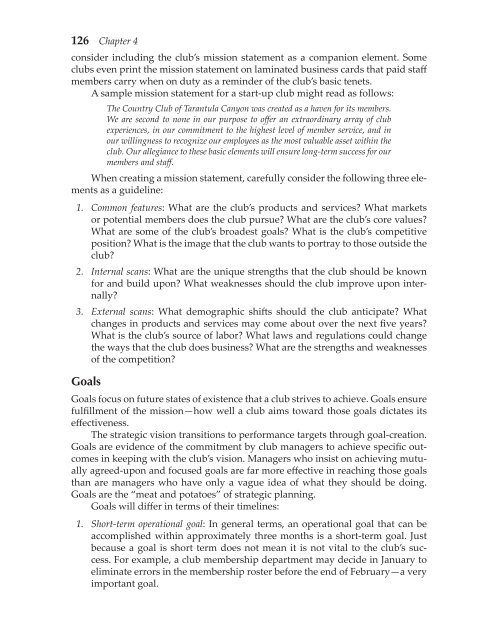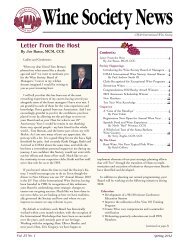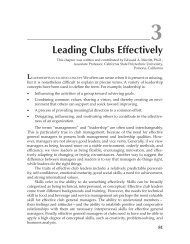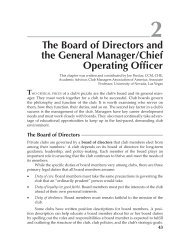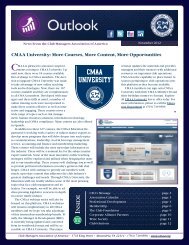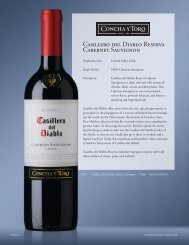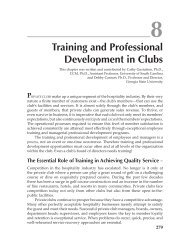Leading the Strategic Planning Process - Club Managers ...
Leading the Strategic Planning Process - Club Managers ...
Leading the Strategic Planning Process - Club Managers ...
- No tags were found...
Create successful ePaper yourself
Turn your PDF publications into a flip-book with our unique Google optimized e-Paper software.
126 Chapter 4consider including <strong>the</strong> club’s mission statement as a companion element. Someclubs even print <strong>the</strong> mission statement on laminated business cards that paid staffmembers carry when on duty as a reminder of <strong>the</strong> club’s basic tenets.A sample mission statement for a start-up club might read as follows:The Country <strong>Club</strong> of Tarantula Canyon was created as a haven for its members.We are second to none in our purpose to offer an extraordinary array of clubexperiences, in our commitment to <strong>the</strong> highest level of member service, and inour willingness to recognize our employees as <strong>the</strong> most valuable asset within <strong>the</strong>club. Our allegiance to <strong>the</strong>se basic elements will ensure long-term success for ourmembers and staff.When creating a mission statement, carefully consider <strong>the</strong> following three elementsas a guideline:1. Common features: What are <strong>the</strong> club’s products and services? What marketsor potential members does <strong>the</strong> club pursue? What are <strong>the</strong> club’s core values?What are some of <strong>the</strong> club’s broadest goals? What is <strong>the</strong> club’s competitiveposition? What is <strong>the</strong> image that <strong>the</strong> club wants to portray to those outside <strong>the</strong>club?2. Internal scans: What are <strong>the</strong> unique strengths that <strong>the</strong> club should be knownfor and build upon? What weaknesses should <strong>the</strong> club improve upon internally?3. External scans: What demographic shifts should <strong>the</strong> club anticipate? Whatchanges in products and services may come about over <strong>the</strong> next five years?What is <strong>the</strong> club’s source of labor? What laws and regulations could change<strong>the</strong> ways that <strong>the</strong> club does business? What are <strong>the</strong> strengths and weaknessesof <strong>the</strong> competition?GoalsGoals focus on future states of existence that a club strives to achieve. Goals ensurefulfillment of <strong>the</strong> mission—how well a club aims toward those goals dictates itseffectiveness.The strategic vision transitions to performance targets through goal-creation.Goals are evidence of <strong>the</strong> commitment by club managers to achieve specific outcomesin keeping with <strong>the</strong> club’s vision. <strong>Managers</strong> who insist on achieving mutuallyagreed-upon and focused goals are far more effective in reaching those goalsthan are managers who have only a vague idea of what <strong>the</strong>y should be doing.Goals are <strong>the</strong> “meat and potatoes” of strategic planning.Goals will differ in terms of <strong>the</strong>ir timelines:1. Short-term operational goal: In general terms, an operational goal that can beaccomplished within approximately three months is a short-term goal. Justbecause a goal is short term does not mean it is not vital to <strong>the</strong> club’s success.For example, a club membership department may decide in January toeliminate errors in <strong>the</strong> membership roster before <strong>the</strong> end of February—a veryimportant goal.


